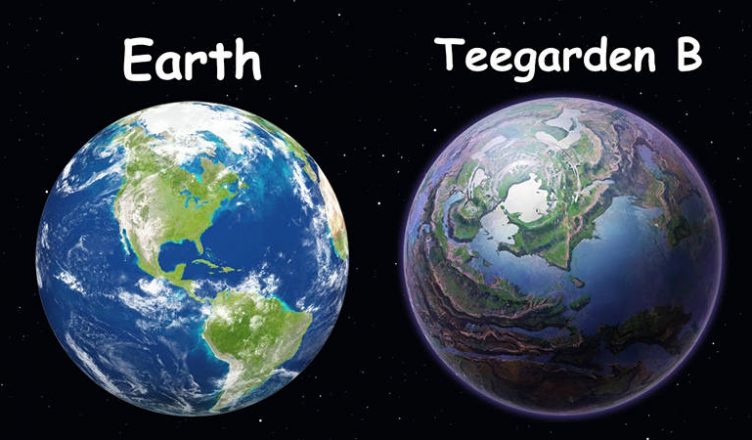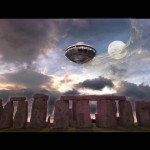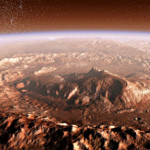In the vast universe, the search for Earth-like planets has always been a dream of astronomers. Recently, they came one step closer to this dream by discovering two potentially habitable planets orbiting a small red dwarf star named “Teegarden’s Star.” This red dwarf star, though faint, is only 12.5 light-years away, making it the 23rd closest known star. What sets it apart is its unique characteristics: with a surface temperature of only 2000-3000 degrees K, a mass just one-tenth that of the Sun, and a lifespan of over 8 billion years, more than twice that of the Sun. Within this star system, these two planets, especially one of them, seem to possess conditions suitable for human habitation.
Potential Habitable Planets: Discovering Earth-like Planets in the Teegarden Star System
Astronomers are becoming increasingly adept at searching for exoplanets, many of which resemble Earth. Recently, scientists have confirmed the existence of two Earth-like planets in close proximity to our solar system, orbiting a small distant star known as “Teegarden’s Star.”
As reported by Science Alert, in 2003, astronomers discovered a faint red dwarf star in the Aries constellation, named Teegarden’s Star, located a mere 12.5 light-years away from us. It is currently the 23rd closest known star system. Despite its proximity, Teegarden’s Star is significantly smaller and cooler than our Sun, with a surface temperature ranging from 2000 to 3000 degrees Kelvin. Its low luminosity results in an apparent magnitude of only 15.4, necessitating the use of large telescopes for observation. Furthermore, Teegarden’s Star boasts an impressive age of approximately 8 billion years, compared to our Sun’s 5-billion-year lifespan.
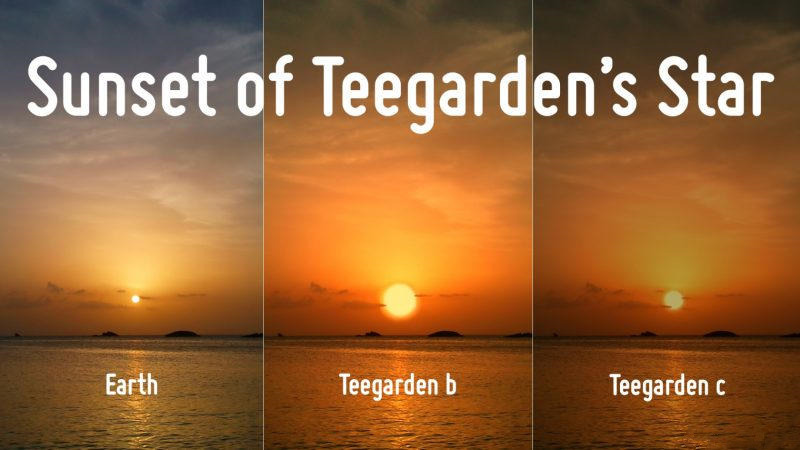
Most notably, scientists have recently discovered that Teegarden’s Star, despite its small size, has its own planetary system. Among these planets, there are two Earth-like worlds, now counted among the top 19 exoplanets with potential habitable environments.
Mathias Zechmeister, an astrophysicist at the University of Gottingen in Germany, suggested that these two planets are likely “inner planets,” akin to Earth, orbiting closer to their star, receiving more sunlight, and residing in the so-called “habitable zone,” where liquid water could exist for extended periods.
The team used the “wobble method” to detect these two planets, which involves measuring the gravitational influence of the planets on their host star. The researchers closely monitored Teegarden’s Star for three years, collecting over 200 observations of the star’s subtle oscillations, ultimately confirming the existence of the two newfound planets, referred to as Teegarden’s Star b and Teegarden’s Star c.
To ensure the accuracy of their observations, the team gathered photometric data on Teegarden’s Star, further reinforcing their findings. Although they could not directly observe transits of these two planets in front of Teegarden’s Star, they concluded that Teegarden’s Star is not a variable star with irregular brightness, confirming the existence of these two planets.
The researchers believe that Teegarden’s Star b offers a 60% chance of hosting a temperate surface environment with temperatures ranging from 0°C to 50°C, averaging around 28°C. In contrast, the more distant Teegarden’s Star c has surface temperatures reminiscent of Mars, averaging around -47°C, with some chances of temperatures above freezing.
As both of these planets are terrestrial and exposed to sufficient solar radiation, they have been included in the “Habitable Exoplanets” catalog. Teegarden’s Star b boasts an Earth Similarity Index (ESI) of 0.95, indicating its striking similarity to Earth.
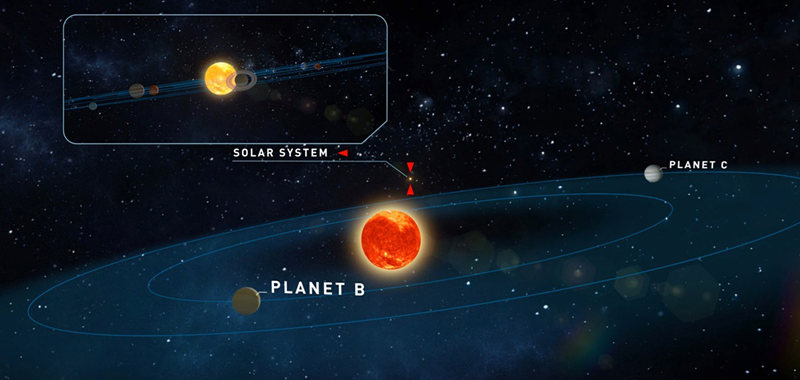
Although this doesn’t guarantee habitability, it is certainly an encouraging prospect. Zechmeister mentioned that if these planets have atmospheres, they could potentially support life.
However, Lauren Weiss, an astrophysicist at the University of Hawaii, pointed out that due to Teegarden’s Star being a dim red dwarf, the habitable zone is relatively close to the star. Teegarden’s Star b has an orbital period of approximately 4.9 Earth days, and Teegarden’s Star c completes one orbit in just 11.4 Earth days, making tidal locking inevitable and reducing the probability of habitability.
Nonetheless, Teegarden’s Star is the 24th closest star system to us and has the potential for planets within the habitable zone, making it an excellent subject for future research. With the development of larger telescopes, such as the James Webb Space Telescope, and more advanced space travel methods, like solar sail-laser propulsion spacecraft, Teegarden’s Star could become our first discovery of extraterrestrial life.
“Teegarden’s Star b” and “Teegarden’s Star c”
Recently, an international research team, including scientists from Spain’s National Committee, discovered two Earth-like planets around the distant Teegarden Star, one of which is named “Teegarden’s Star b,” and the other is named “Teegarden’s Star c.”
According to research reports, “Teegarden’s Star b” is currently located at a distance of only about 12.5 light-years from Earth. As per the latest research published in the astronomy and astrophysics journal by astronomers from the University of Gottingen in Germany, these discoveries mark the 10th and 11th exoplanets found near Earth since 2016.
Among these two planets, “Teegarden’s Star b,” the closer of the two to the star, has garnered extensive attention from scientists due to its striking resemblance to Earth, making it one of the most Earth-like exoplanets discovered so far in humanity’s quest to explore cosmic Earth-like planets.
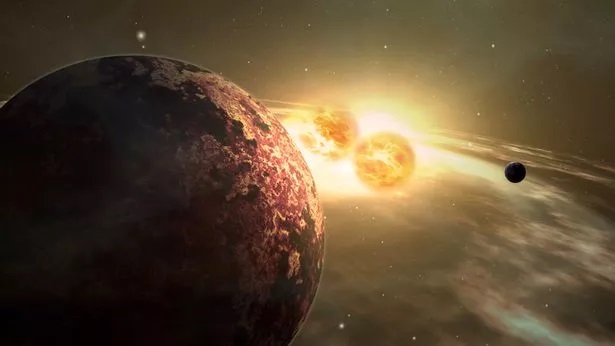
As researchers from institutions such as the University of Gottingen in Germany and the Canary Islands Institute of Astrophysics (IAC) in Spain have revealed, these two planets, bearing the name “Teegarden’s Star,” are currently orbiting a star within the Aries constellation known as “Teegarden.” Notably, “Teegarden” is a red dwarf star, characterized by its small size and relatively low temperature, with a mass only one-tenth that of the Sun, a surface temperature of just 2704 degrees Celsius, and very low luminosity.
Despite “Teegarden” being relatively close to Earth at a distance of 7.5 light-years, it surprisingly ranks as the 24th nearest star system to Earth. Its dim luminosity meant that scientists only discovered its existence in 2003.
The researchers continued to explain that, after three years of continuous observation and the collection of over 200 Kepler measurements, they determined that the mass of “Teegarden’s Star b” does not exceed the scale of super-Earth planets. Its estimated body mass is roughly 2 to 10 times that of Earth, suggesting that it belongs to the category of Earth-like planets.
Furthermore, what adds to the excitement is the structure of these planets. As astronomer Pedro Amado has mentioned, our current technological limitations prevent us from accurately measuring the size of “Teegarden’s Star b.” A planet’s size depends on a variety of factors, including its composition, internal structure, and the presence of an atmosphere. However, it can be reasonably assumed that it may be similar to Earth in many respects.
In addition, according to data analyzed by astronomers, “Teegarden’s Star b” has an orbital period of approximately 4.9 days around Teegarden’s Star, with a similarity to Earth of 0.95. On the other hand, its “sibling,” “Teegarden’s Star c,” takes around 11.4 days to orbit the star and exhibits a similarity to Earth of 0.9. If we were to compare these two planets to our solar system, “Teegarden’s Star b” would be similar to Earth, and “Teegarden’s Star c” would be more akin to Mars.
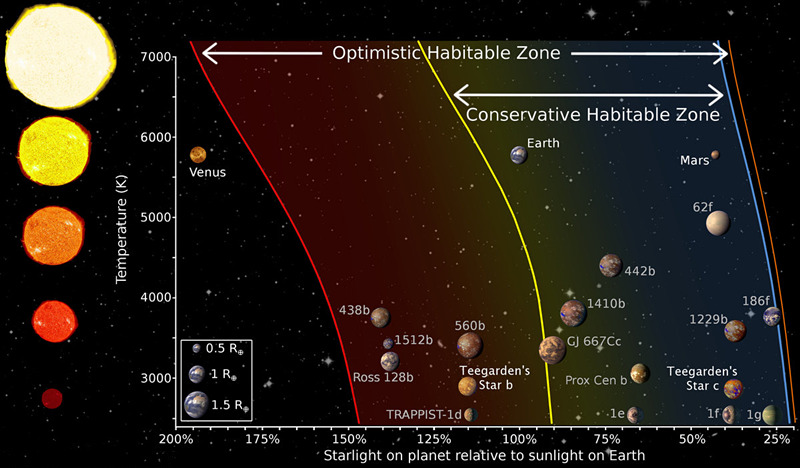
According to Zechmeister, Teegarden’s Star is not only small but also relatively cool. As it emits energy equivalent to only about 0.1% of the Sun’s energy, the surface temperature of “Teegarden’s Star b” is quite moderate because it absorbs heat comparable to what Earth absorbs from the Sun. Its sibling, “Teegarden’s Star c,” absorbs even less heat, making it more similar to our neighboring planet, Mars.
Based on scientific analysis, “Teegarden’s Star b” theoretically has a surface that could contain liquid water. So, the question arises: Could a planet so similar to Earth in various aspects nurture life?
Considering the historical experiences of successful life nurturing, it is highly probable. However, from another perspective, the star of “Teegarden’s Star b” has some adverse effects on the potential for life due to factors such as its orbital period, temperature, and gravitational conditions.
What are these adverse effects, you might ask? As explained by “Reference News,” although “Teegarden’s Star b” falls into the category of temperate planets, its potential for habitability is diminished due to the unique nature of Teegarden’s Star. This star experiences high magnetic activity under normal circumstances, which directly affects the maintenance of the atmosphere of “Teegarden’s Star b.”
Therefore, while “Teegarden’s Star b” possesses the necessary conditions for life to emerge, it does, to some extent, introduce unfavorable conditions for the survival of life. As technology continues to advance and human exploration of the cosmos deepens, it aids in unraveling more mysteries and seeking new potential habitats for humanity.
END:
In this boundless exploration of the cosmos, the discovery of “Teegarden’s Star b” and “Teegarden’s Star c” heralds our stars of the future. While much about them remains unknown, they undoubtedly represent one of the planets humanity dreams of, igniting our boundless curiosity about the universe. In the future, with the further advancement of scientific technology, we may delve deeper into these planets, unravel their mysteries, and perhaps even find signs of life. The two planets of the Teegarden system may become crucial targets for future space exploration, leading us to new interstellar adventures and unveiling more chapters of the cosmic unknown. May we discover more miracles on this interstellar journey and embrace new cosmic challenges.
More UFOs and mysterious files, please check out our YouTube channel: MysFiles
Two Incredible Pyramid Discoveries In 2023 – Mysterious Chamber and Pyramids in Jungle
